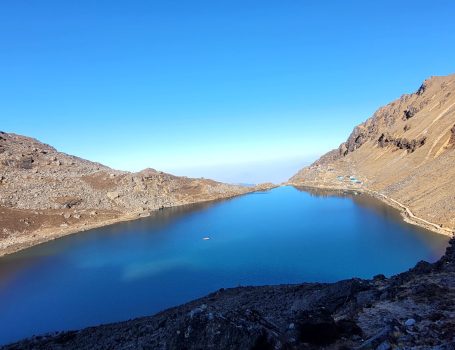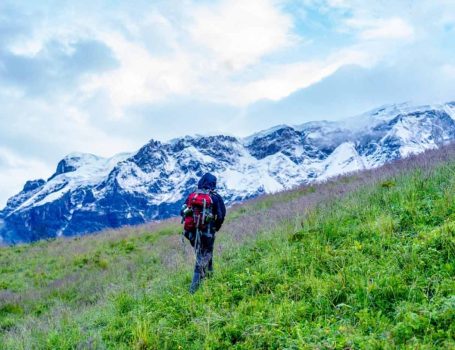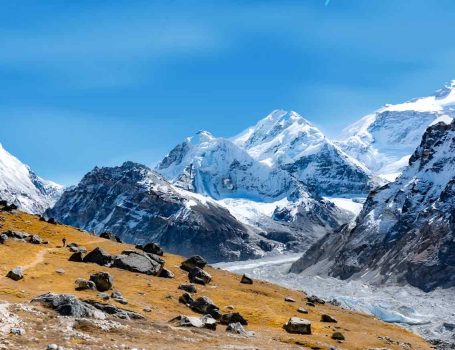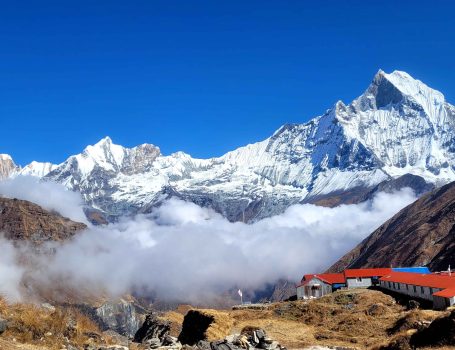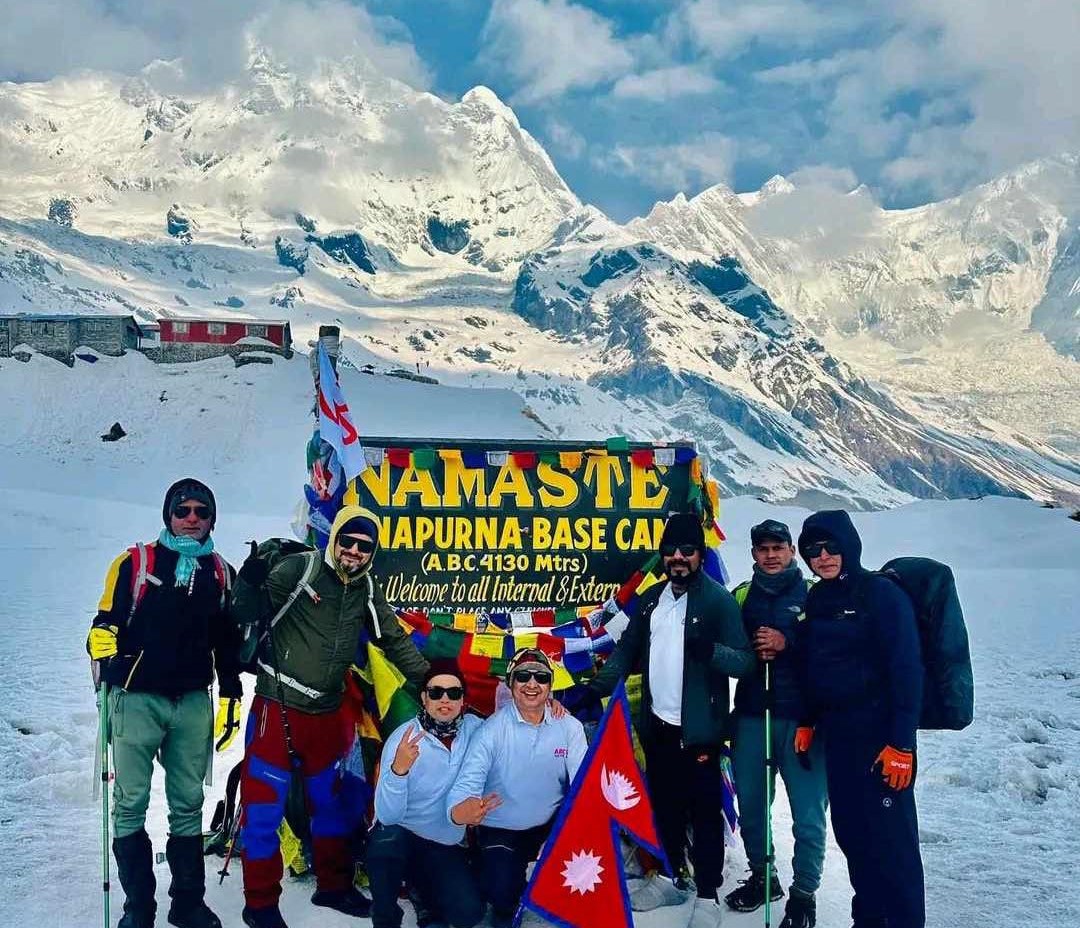Around Manaslu Trekking
730
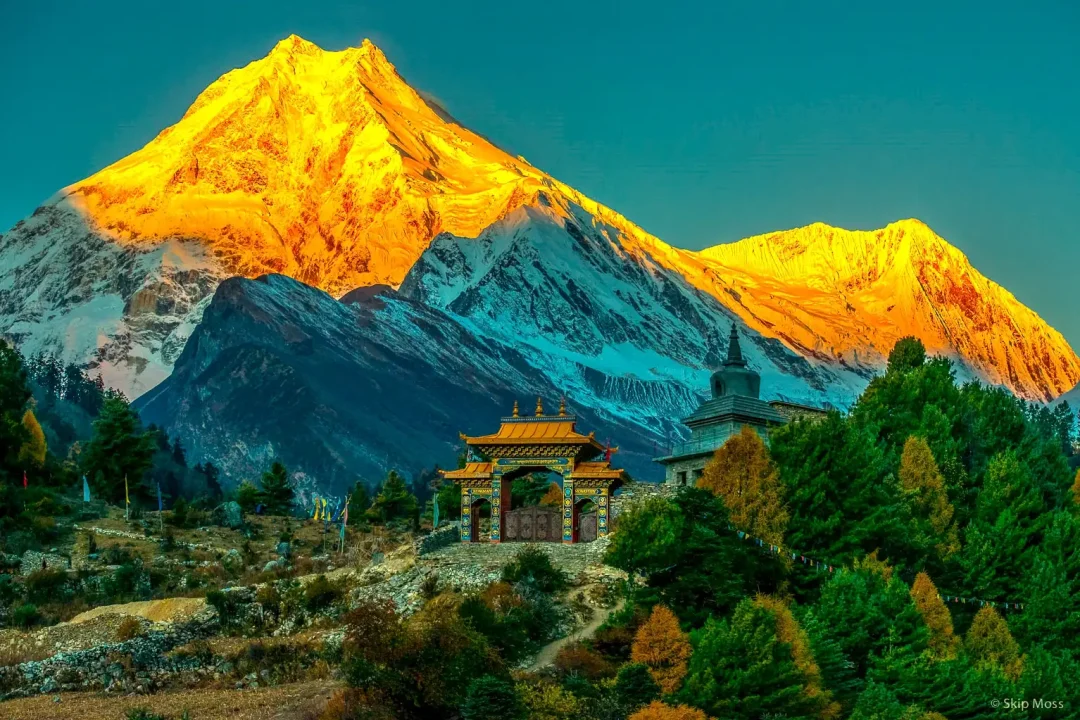
Trip Facts
- Duration 14 Days
- Trip Difficulty moderate_strenuous
- Max. Altitude 5106 m
- Start and End Kathmandu - Kathmandu
- Best Time Autumn & Spring
- Accommodation Tea House/ Hotel
Trip Highlights
- Stunning scenic drive through the countryside from Kathmandu to Machha Khola.
- An opportunity to immerse oneself in the locally vibrant and culturally exhilarating village of Namrung.
- Complemented views of the Manaslu and rest day acclimatization in Sama Gaon.
- A strenuous trek to the remote village of Samdo is rewarded by the magnificent views of the Himalayas.
- Conquer the strenuous and challenging path to the Larkya La Pass.
- Wrap up the adventure in a refreshing scenic journey back to Kathmandu.
Overview
14-day trek to the Manaslu Circuit, also known as the Around Manaslu trek, is a strenuous and wilderness journey to the magnificent route to the serene and secluded Manaslu region. We will spend two weeks on this trek before capturing the most pristine memories for a lifetime. Our adventure kicks off with the most beautiful and scenic drive to the Machha Khola, which sets the stage for a trek through the lush forests and diverse landscapes of the lower altitudes of Nepal.
We will ascend through the charming villages settled by the Gurung Communities like Jagat and Dyang to start the trek. We can immerse ourselves in the local cultures and stunning scenery. Namrung and Sama Gaon are the most enchanting villages of this trail, wrapped in the Tibetan-influenced culture and traditions. An acclimatization day in Sama Gaon allows us to have interactions with the local cultures and traditions. The dramatic Larkya La Pass at a staggering 5106m is the pinnacle of this trek, as we have the challenging ascent to cross this pass. The strenuous path of Larkya La Pass provides us with the magical and panoramic vistas of Manaslu, Himlung Himal, and the Annapurna range before descending to Bhimthang.
Our journey will conclude with the descending trek to Dharapani and a drive back to Kathmandu. The two weeks of panoramic and rewarding vistas to the secluded and restricted region of Manaslu are going to be memorable for the rest of your life. All Nepal Excursions guarantees an exciting and awe-inspiring Himalayan Journey. We at All Nepal excursions ensure well-supported guides, an immersive experience, and exploration that is a perfect and enchanting experience for adventurers seeking a less-traveled path in Nepal’s mountains.
Why should we choose this trek?
The Manaslu Circuit Trek with All Nepal Excursions offers a magical and unparalleled adventure to the Himalayas. This trek blends with the rich cultural heritage, and is a less-crowded alternative to Nepal’s most famous treks, and provides an opportunity to explore restricted and less-explored regions.
Main Attraction: The trek’s center of attraction is a dramatic crossing of the Larkya La Pass at 5106m. That place offers breathtaking views of Mount Manaslu alongside the Himlung Himal and Annapurna ranges. The more attractions include the lush valleys and culturally decorated villages of Namrung and Samagaon.
History: This trekking trail of the Manaslu region was opened to trekkers in 1991 AD. This region still remains a restricted area, with only a few trekkers every year getting the permits. The trails, which were historically trade routes between Nepal and Tibet, carry the history of ancient trade and cultural exchange between the two countries from the past.
Culture: We have a deep cultural immersion during the trial. The vibrant traditions of Gurung and Tibetan communities add cultural significance with the bizarre views of the Himalayas from near to far perspectives. The Tibetan-influenced villages offer us a glimpse into their high-altitude lifestyles and resilience.
Geography: The trek spans a dramatic elevation gain. From 960m to 5106m, traversing through the river valleys and terraced fields with the cross suspension bridges over the Budhi Gandaki River.
Flora and Fauna: The Manalsu Conservation Area is home to biodiversity. We will encounter the lush forests in subtropical regions and alpine meadows, and the snow-covered, rugged terrain. We can encounter wildlife like the Himalayan thar, blue sheep, and endangered snow leopards.
Best Seasons for the Manaslu Circuit Trek
Manalsu Circuit treks provide the best experience when undertaken in the Spring and Autumn seasons. The seasons provide the most favorable weather and clear views with stable trail conditions. The seasons also offer the best experience that balances the temperature, vibrance, and tranquility.
Spring (March to May):
Spring is probably the best time we embark on this magnificent and joyous valley of Manaslu. The Manaslu Circuit provides the cooler regions and vibrant landscapes overall. The blooming rhododendrons and wildflowers provide a serene setting on the trails. Local Festivals like Lhosar fall on this season, which enhances our cultural experience to the peak. This season provides the great unobstructed views of the Manaslu region with comparatively easier and drier trails to cover.
Autumn (September to November):
Autumn is another favourable season for the trek to the Manaslu Region. This season offers dry weather, predictable conditions, and serene settings in the higher regions like Larkya La Pass. The chances of rainfall are minimal, so the safe trails are expected. The festivals like Dashain and Tihar fall in this season, which makes the cultural immersion and interaction for this trek a beautiful one. The trails will get a bit busy this season, as this season is also the holiday season in Nepal.
Difficulties of the Manaslu Circuit Trek
The trek to the Manaslu Circuit of 14 days is a moderately challenging trek, yet it offers a range of adventures and is naturally rewarding for the trekkers. The physically demanding treks like these often need fit people who are mentally willing to do an adventure. Despite the difficulties, the stunning Himalayan vistas and cultural immersion make this trek an unforgettable one.
High Altitude Challenges: Crossing the Larkya La Pass, which stands at the strenuous height of 5106m, involves the risks of altitude sickness and requires proper acclimatization. We will face the cold and freezing temperatures and potential snow that requires robust gear and stamina.
Rugged Terrain: The trail has steep ascents and descents along the way. The narrow path along the Budhi Gandaki River often creates difficulty for the trek. Also, the rugged terrain of Manaslu tests our balance and endurance.
Remote Logistics: There are limited teahouses with basic amenities in the remote areas. We must be very careful in this trek and be prepared for minimal comforts. This should be strictly followed, especially at higher elevations.
Variable Weather: The weather conditions are as unpredictable as we expect in the high-altitude terrains. Rain and snowfall at a sudden time can ruin the trekking experience and increase the trek’s difficulty.
Permits Required
| Permit | Price (Non-SAARC Nationals) | Price (SAARC Nationals) |
| Manaslu Restricted Area Permit (RAP) | September-November: USD 100 for first 7 days + USD 15/day thereafter December-August: USD 75 for first 7 days + USD 10/day thereafter | Same as Non-SAARC |
| Manaslu Conservation Area Permit (MCAP) | USD 30 (NPR 3,000) per person, single entry | USD 10 (NPR 1,000) per person, single entry |
| Annapurna Conservation Area Permit (ACAP) | USD 30 (NPR 3,000) per person, single entry | USD 10 (NPR 1,000) per person, single entry |
Important Information:
- RAP Duration: It is required from Jagat to Sama-Gaon from the fourth day to the seventh day. It is valid for a time entry.
- Regulations: Permits are non-refundable, non-transferable, and can only be issued through agencies. Children under 10 are exempt from MCAP and ACAP fees.
- All Nepal Excursions will handle all the obtainable permits once the booking is done.
Altitude Sickness
Altitude: We will reach the pinnacle of this trek at 5106m at the Larkya La Pass. Higher altitudes reduce the oxygen levels and challenge our physical endurance. The risks of altitude sickness are also high on this trek.
Acclimatization: We have scheduled a rest day on Sama Gaon at 3530m to acclimate our bodies and to adapt to the high altitudes. The guides will constantly check on you if you show any signs of sickness, and we will have gradual ascents to acclimate our bodies to the situation.
Precaution: To prevent the risks of altitude sickness, we will ascend slowly and hydrate well to reduce the risks of altitude sickness. Consistent monitoring and carrying Diamox-like medications are also very important as precautions.
Basic Treatment:
The basic treatment for mild altitude sickness is resting, hydrating, and taking Diamox as medication. Painkillers will help reduce headaches, and emergency rescue is also possible in severe conditions.
Rescue: We will have emergency rescue via helicopter if you show any sign of altitude sickness. We will coordinate with the local guides for evacuation. Make sure that your travel insurance policy covers the refund of high-altitude rescue via the helicopter.
Insurance
Travel Insurance is very essential for high-altitude trips and treks like this. Travel Insurance helps us to safeguard the unforeseen events. The travel insurance should cover medical emergencies, including altitude sickness and emergency helicopter evacuations. Insurance also provides security for your hard-earned money, so it is important to check and consult with your travel agent properly. All Nepal Excursion will help you find the best policy. Proper insurance always saves you the big bucks, so always buy travel insurance before you leave for a trip to another country.
Food on the Manaslu Circuit Trek
Food served in Kathmandu will be of ample choices with the Nepali, Indian, Chinese, and continental options on the menu. During the trek, we will have limited but nutritious choices of food that feature dal, bhat, pasta, and noodle-like food. The food will be hygienic and heartily served by the local teahouses. As we go higher, the options and amenities decrease.
Accommodations on the Manaslu Circuit Trek
We will stay in the basic teahouses throughout the Manaslu Circuit trek. The teahouses offer a modest range of facilities. The rooms typically are twin-sharing with shared bathrooms. We recommend that you have a sleeping bag carried with you for more comfortable sleep during the colder nights. Amenities like hot showers and Wi-Fi are not accessible in the remote villages like Numrung and Sama Gaon.
Additional activities
- We can immerse ourselves in Tibetan-Buddhist culture and witness the monks chanting in this spiritual place.
- We explore the vibes of Kathmandu and buy trekking gear, souvenirs, and local handicrafts like prayer flags.
- We can browse Thamel’s bustling streets for Nepali pashminas, trekking supplies, or souvenirs before or after the trek.
- We must visit UNESCO sites like Boudhanath Stupa and Pashupatinath Temple whenever we are free.
- We will engage with locals on our rest days by being engaged in their daily chores and practices.
 Around Manaslu Trek Route Map[/caption]
Around Manaslu Trek Route Map[/caption]
